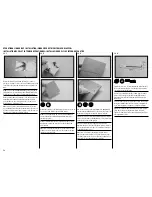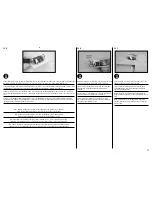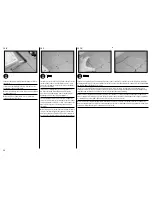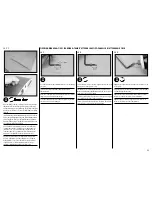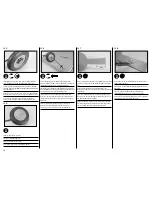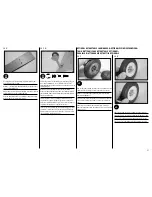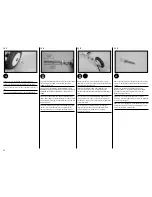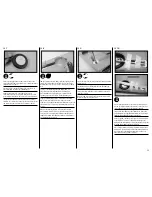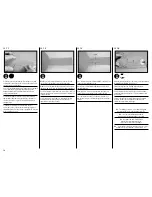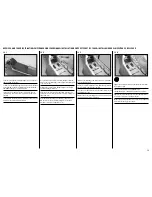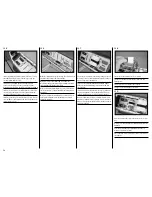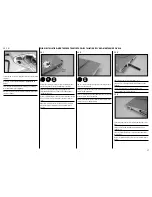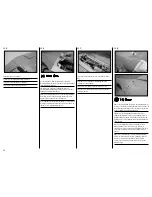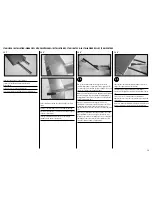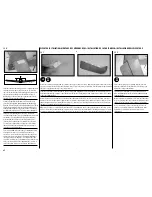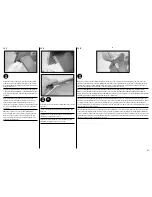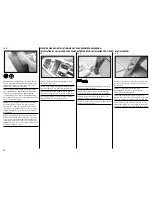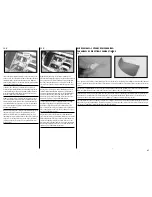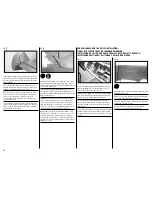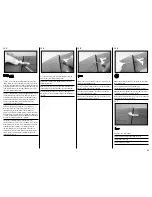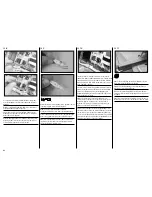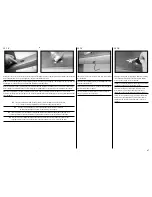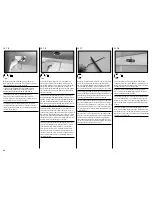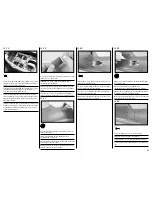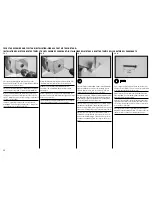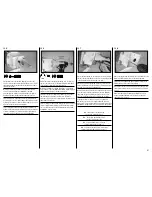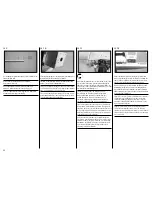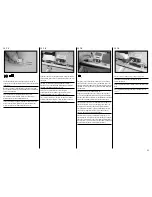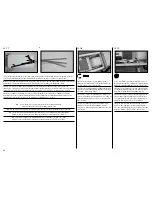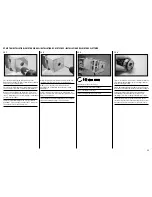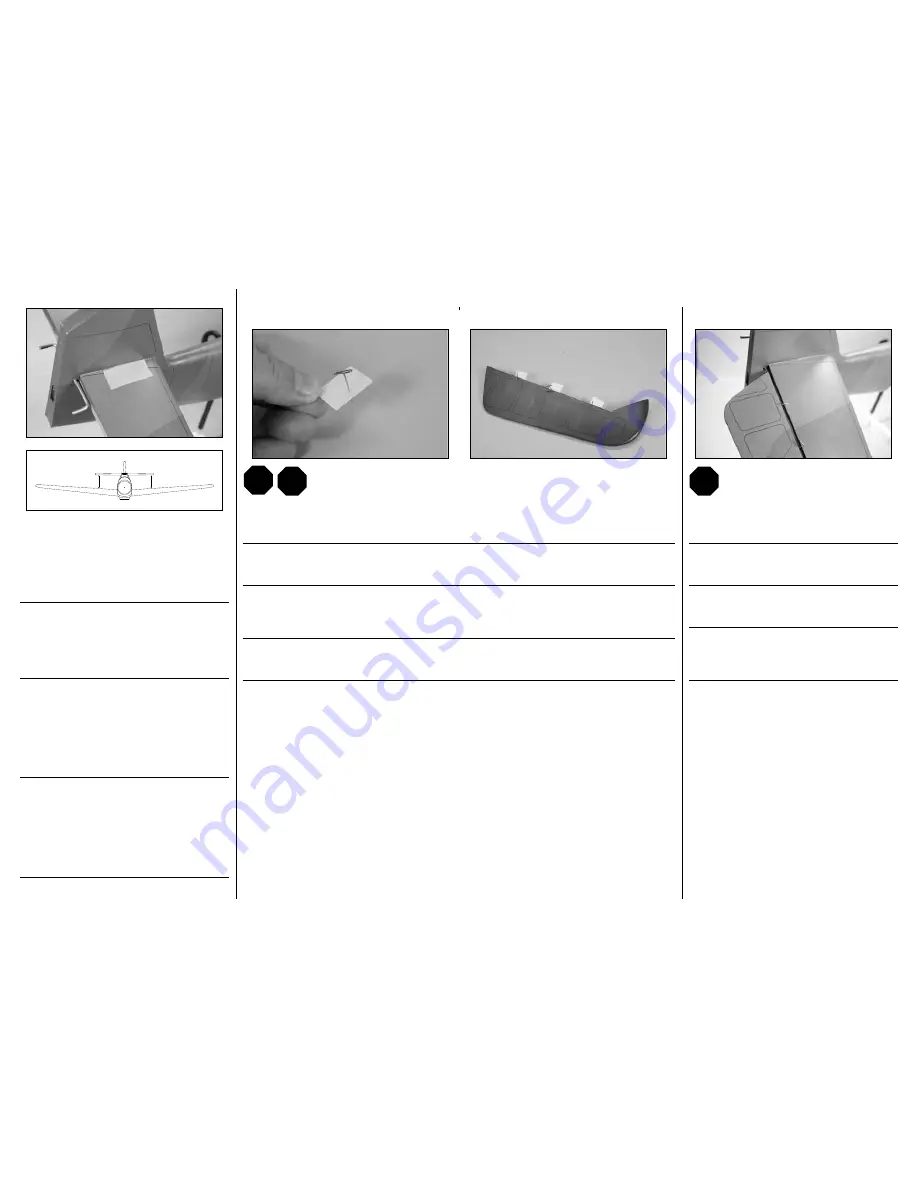
40
5
A
A
A=A
Slide the stabilizers back into position. Use a paper towel and
isopropyl alcohol to remove any excess epoxy. Use low-tack
tape to hold the stabilizer halves tightly against the fin until
the epoxy fully cures. Make sure the stabilizer is aligned
with the wing as shown. The wing can be removed from the
fuselage once the epoxy has fully cured.
Schieben Sie das Höhenruder zurück in Position. Wischen
Sie mit einem Papiertuch und Ispropylalkohol überflüssiges
Epoxy ab. Fixieren Sie die Höhenleitwerkshälften bis das Epoxy
vollständig getrocknet ist. Achten Sie bitte darauf dass das
Leitwerk zu der Tragfläche ausgerichtet ist. Nach Trocknung
des Klebstoffes können Sie die Tragfläche wieder abnehmen.
Faire glisser les stabilisateurs à leur place. Utiliser une
serviette en papier et de l’alcool isopropylique pour retirer tout
excédent de colle époxy. Utiliser de l’adhésif de masquage
pour tenir fermement les moitiés de stabilisateur contre
la dérive jusqu’au durcissement complet de la colle époxy.
S’assurer que le stabilisateur est aligné avec l’aile comme
illustré. L’aile peut être retirée du fuselage une fois que la
colle époxy a complètement durci.
Far scorrere nuovamente in posizione gli stabilizzatori. Usare
un tovagliolo di carta e alcol isopropilico per rimuovere
eventuali eccessi di resina epossidica. Usare nastro a bassa
aderenza per tenere le metà degli stabilizzatori saldamente
contro la deriva fino al completo essiccamento della resina
epossidica. Accertarsi che gli stabilizzatori siano allineati con
l’ala, come mostrato. Una volta completamente essiccata la
resina epossidica, l’ala può essere rimossa dalla fusoliera.
1
x6
L
R
L
R
Remove the elevators and hinges from the stabilizer. Use a pin vise and 1/16-inch (1.5mm) drill bit to drill a hole in the center of
each hinge slot in both the elevators and stabilizers. Place a T-pin in the center of each hinge. Slide the hinges into position with
the T-pin resting against the edge of the control surface.
Entfernen Sie die Ruder vom Höhenleitwerk. Bohren Sie mit einem Handbohrer ein Loch in die Mitte jeden Scharnierspaltes auf
Ruder und Leitwerksseite. Stecken Sie eine T-Nadel in die Mitte jedes Fließscharnieres und schieben das Scharnier in das Ruder
so dass die T-Nadel anliegt.
Retirer les gouvernes de profondeur et les charnières du stabilisateur. Utiliser un porte-foret et un foret de 1,5 mm pour percer
un trou au centre de chaque fente de charnière dans les gouvernes de profondeur et les charnières. Placer une épingle en T sur
chaque charnière, en position centrale. Mettre en place les charnières en les faisant glisser dans leurs fentes respectives, avec
l’épingle en T en appui contre le bord de la gouverne.
Rimuovere gli elevatori e le cerniere dallo stabilizzatore. Usare un trapano manuale e una punta per trapano da 1,5 mm per fare
un foro al centro della scanalatura di ogni cerniera, sia negli elevatori che negli stabilizzatori. Posizionare un perno a T al centro
di ciascuna cerniera. Far scorrere in posizione le cerniere con il perno a T appoggiato contro il bordo della superficie di controllo.
2
L
R
L
R
Fit the elevator into position, checking that the joiner wire
allows the stabilizer to be positioned to close the hinge gap
between the elevator and stabilizer.
Schieben Sie das Höhenruder in Position und prüfen dass
mit dem Verbinderbügel die Lücke zwischen Ruderblatt und
Leitwerk schließt.
Monter la gouverne de profondeur en position, en vérifiant que
la tige de jonction permet de positionner le stabilisateur pour
combler l’écart de charnière entre ce dernier et la gouverne.
Inserire in posizione l’elevatore, verificando che il cavo di
giunzione consenta di posizionare lo stabilizzatore in modo
da chiudere lo spazio della cerniera tra l’elevatore e lo
stabilizzatore.
eleVator installation•montage des höhenruders•installation de la proFondeur•installazione dell’eleVatore

